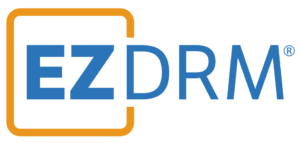This article has been taken from IABM Journal Issue 109.

Peter Bruce
Director APAC, IABM

ConnecTechAsia 2019 is upon us
ConnecTechAsia in Singapore this June is the rebranding and umbrella name for BroadcastAsia and CommunicAsia. The organizers have added NXTAsia, which includes the latest of technologies as per the organizers’ explanation “…comprehensive array of disruptive technologies and emerging solutions”.
I first went to BroadcastAsia around 1996. The show was held alternate years; it was a very different time then. The broadcast show was held at the same time as CommunicAsia, but there was a distinct difference between the two events. BroadcastAsia was more of a B2B Exhibition. On their way from the airport, a regional sales manager attending BroadcastAsia would be comforted by the familiar sight of a large antenna, which would undoubtedly have a TV station beneath it. Meanwhile CommunicAsia was very much a telco show with a B2C feeling, with companies such as Nokia and Erickson launching new phone models at the event. Visitors coming to one show would mostly likely not visit the other; why would a production engineer be interested in the telcos’ antennas and satellite dishes?
The reason that I highlight the coming together of the three shows under one umbrella into ConnecTechAsia is that this is a reflection of what has happened to our industry overall.
Both BroadcastAsia and CommunicAsia have changed significantly – and CommunicAsia is now a true B2B show. Just as the broadcast industry has moved to being digitized and software-centric, the communications industry has gone through a similar process as industry convergence happens at an ever-increasing rate. These two disciplines are crossing over at a rapid pace: I could highlight Telstra as an example –its core markets in the past were the home consumer and mobile phone users. Telstra’s services division today has contracts to distribute (including all the metadata) sports events such as the WTA. Its OTT services are just as valuable to the broadcast and media professional (who would normally visit BroadcastAsia) as they are to the telecoms provider.
The addition of NXTAsia highlights the interest of visiting media and telco people in the total convergence of industries. They must also get to grips with a wide array of technologies such as IoT, Cyber Security, Cloud, AI, Smart Cities, blockchain and more. When I visited the KOBA show in Korea recently, I noticed the TV station MBC highlighting an autonomous tractor on its booth, which the broadcaster had developed as a spin off from its research on GPS guidance and tracking.
Thus the merging of the three exhibitions by the ConnecTechAsia organizers is just reflecting what is happening across the industry as a whole. Additionally, as the technology rapidly evolves, this is having an equivalent knock on effect on business models; media outlets are having to change their business models just as fast as the technology is changing. It has been very clear for some time that the old advertising income models that underpinned broadcasters’ profits and the telcos’ historic reliance on profits from phones is not working any longer.
For this reason, IABM will be running one of its Executive Summits in Singapore on the Monday before ConnecTechAsia kicks off. The sessions will be relevant to both the technologists and business-focused employees of broadcast and media companies. Under the banner ‘New Markets – New Business Opportunities’, the Summit will highlight new and emerging technologies, how they are changing end-users’ business models, and how they are also opening up new opportunities for technology suppliers.
Many media companies are reviewing their business models and looking into AV, events, eSports, House of Worship and focusing on how to address social media. Meanwhile, the supply side of the industry is focused on adapting and reskilling staff and gaining capabilities in different disciplines. This could be to refocus staff to become IT centric, understanding the differences in covering eSports or a ProAV event, or getting to grips with new forms of OTT distribution. The broadcast industry is not dead – it is just adapting to the new digitized world of media everywhere, at any time and on any device.
So the regional sales manager that in the past would visit an isolated building with a TV transmitter attached, is now more likely to visit a non-descript office block in which computerized OTT operations are running, using cloud or IT centric storage.
The media world is adapting and so is the ConnecTechAsia show in Singapore. These are exciting times.









